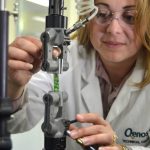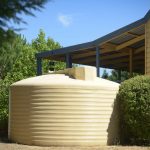Thermal Stability P.2
In Thermal Stability Part 1, we explored the importance and impact of thermal stability and touched on the use of Antioxidants, this blog post will explore the use of antioxidants in more detail.
Antioxidants are necessary to provide protection to polyethylene over a number of stages. The first is during extrusion conducted by the polyethylene manufacturer. The second, for coloured materials, is another extrusion stage where pigment is added via a colour masterbatch (concentrate) and the material is pelletised again. During both these extrusion stages, the material may be exposed to temperatures of the order of 230°C. The third stage is during milling (grinding), however, the temperature the material is exposed to in this process is relatively low and only for a brief period of time. The final processing stage is, of course, the moulding process, where the material can be exposed to high temperatures for long periods of time. After processing the mouldings may also be exposed to moderately elevated temperatures for long periods of time during service. In order to provide adequate protection, the additive package needs to be robust and will normally include two different types of antioxidant added at generous levels.
Having a high thermal stability, as Alkatuff does, is important because it makes it less prone to oxidation, discolouration and loss of toughness in the field. The next blog post will look at colouring in more detail.




